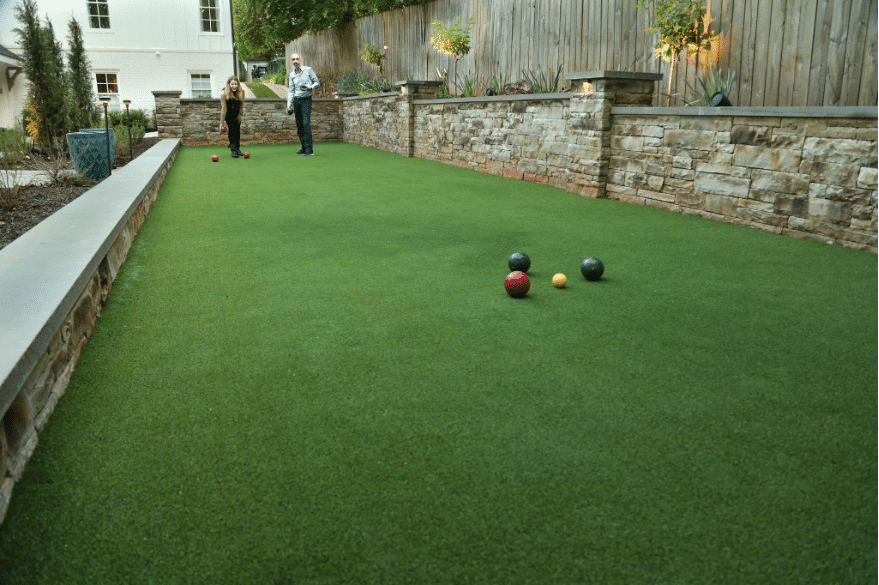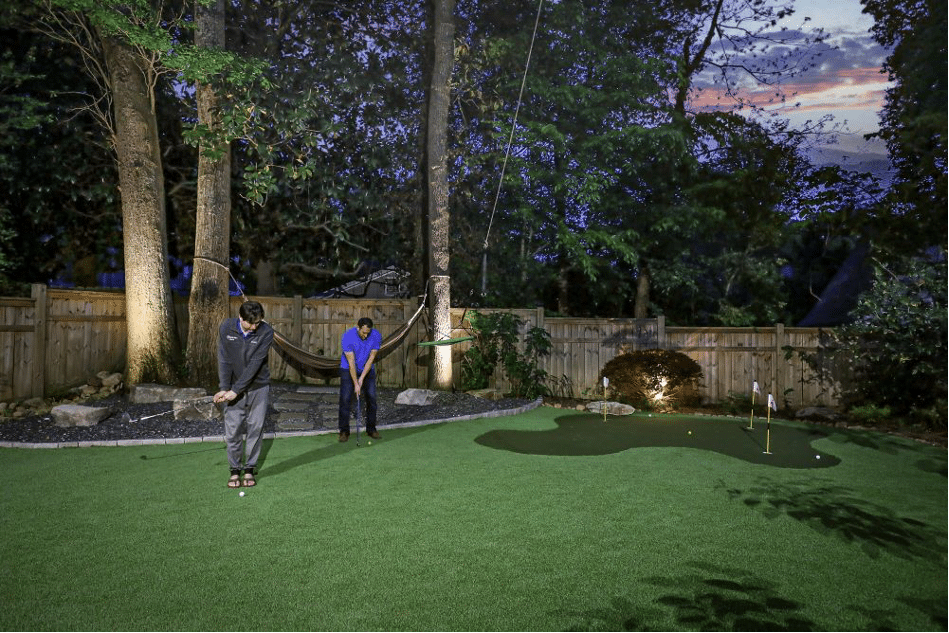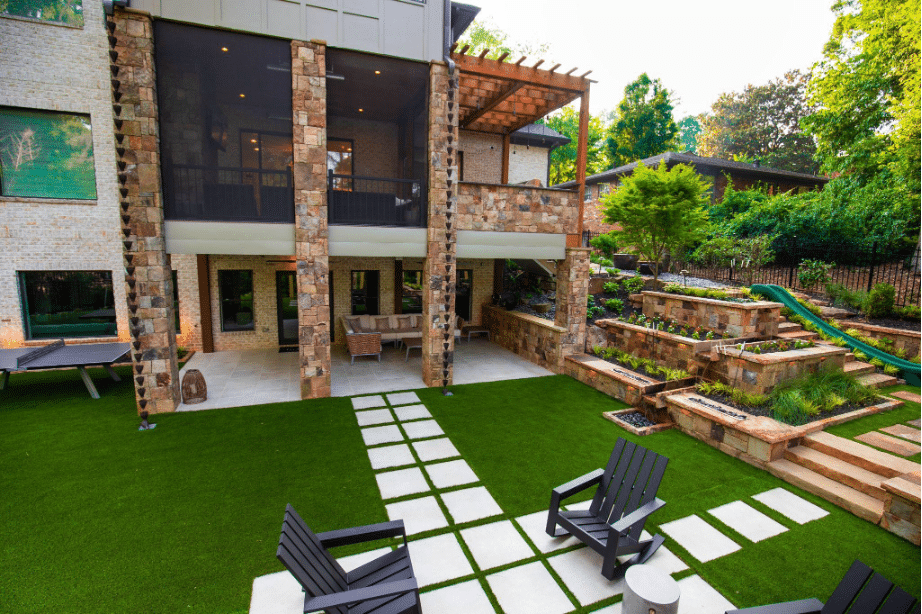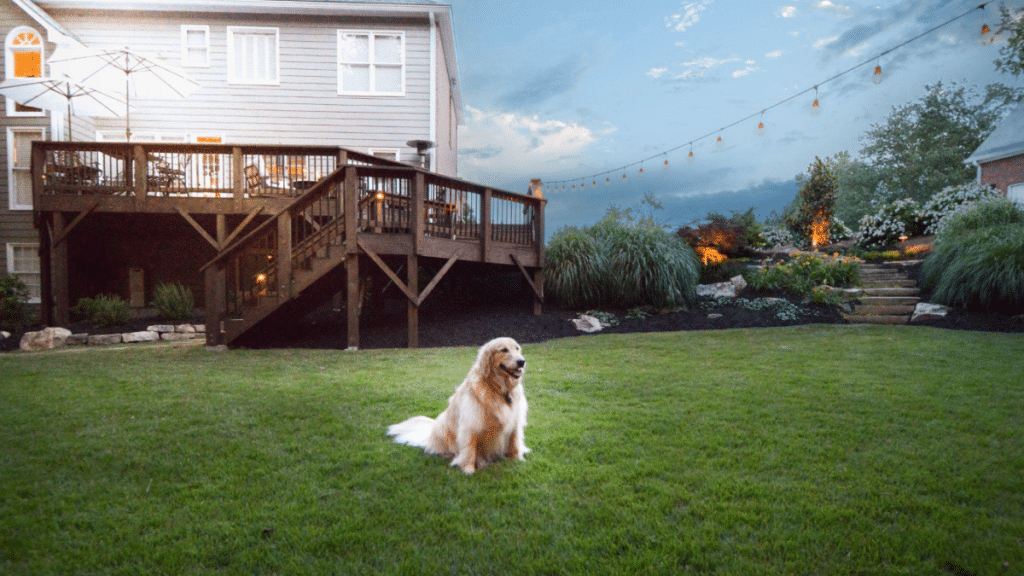It’s no secret that artificial grass is more expensive than regular grass, but is it worth the investment?
If natural grass is being discussed, it requires significantly more upkeep than synthetic turf—and the time and money spent on weeding, mowing, edging, watering, and fertilizing add up rapidly. Compared to natural grass, the advantages of Synthetic Turf Installation in Atlanta have become more obvious. In drought-prone places such as Georgia, homeowners are learning that artificial turf helps them maintain a beautiful lawn without worrying about breaching water restrictions or their local Homeowners Association’s landscaping requirements.
From schools and municipalities to homeowners and business owners, an increasing number of individuals are turning to synthetic turf for long-term and versatile solutions across various market categories.

What Is Synthetic Turf?
Synthetic turf, or artificial grass, is a surface composed of synthetic fibers that resemble natural grass. Initially developed in the 1960s for use on sports fields, synthetic grass has greatly improved in appearance and usefulness, with applications in residential, commercial, and recreational contexts.
Composition and Construction of Synthetic Turf:
- Backing: The foundation of synthetic turf is a multi-layered backing system, often comprised of polypropylene or polyurethane, which provides stability and drainage. This backing is intended to support the grass fibers and maintain the turf’s longevity and durability.
- Infill: The infill is an essential component that gives synthetic turf its natural feel and appearance. It is made of crumb rubber, sand, or a combination. The infill supports the grass strands, keeps them upright, and cushions the impact on athletes and users.
- Grass Fibers: The visible component of synthetic turf, the grass fibers, comprises polyethylene, polypropylene, or nylon. These fibers are designed to simulate the appearance and feel of actual grass, with varying lengths, colors, and textures available to suit different needs and preferences.
9 Reasons Why Synthetic Turf Installation Is Good:
1. Lower water bills:
Sustainable landscape design considers water usage. Except for an occasional rinsing to remove dirt and debris, artificial turf requires little to no water. Turf also helps reduce water wastage caused by timed sprinkler systems that operate whether needed or not. This will save you oodles on your water bill, considering how much water is required to hydrate natural grass.
2. All weather:
This point can be argued if it snows, but the turf can be used in almost any weather. For example, the weather does not prevent players from using the turf in sports.
3. Always Look Healthy:
Natural grass occasionally gets brown and uneven areas. In comparison, artificial turf is always bright green and has no empty areas. Furthermore, the height is always optimum because fake grass never gets too long and appears unkempt.
4. Cost-Effectiveness Over Time:
The initial expense of Synthetic Turf Installation can be high, but it pays off. The initial investment saves money in the long run by reducing maintenance costs such as watering and fertilizing. Consider it a long-term investment—artificial grass is resilient and will remain lush for years, providing a significant return on investment.
- Long-term savings: Reduces the continuing costs of grass upkeep.
- Return on Investment: The benefits outweigh the initial costs over time.
5. Safe for children and pets:
One advantage of artificial turf is that it is entirely safe for kids and pets. Children and pets can play on artificial turf without exposure to the dangerous pesticides, fertilizers, and other toxic chemicals necessary to maintain a natural grass lawn.

6. Does not need harsh fertilizers:
Because it does not grow or spread, artificial turf remains lovely and vibrant even when not fertilized regularly. It will remain lush, green, and toxin-free. Harsh fertilizers can also negatively impact the surrounding ecology, generating algae blooms in streams, rivers, ponds, and lakes.
7. Perfect for recreational areas:
Artificial turf is perfect for leisure areas such as bocce ball courts, tennis courts, greens, and patio floors. It is quite durable and can handle heavy foot activity. It is also easy to cut and shape, making it suitable for use in irregularly shaped spaces or patterns.
8. Drought resistant:
An artificial grass lawn requires occasional rinsing to prevent odors and dust buildup. Otherwise, synthetic turf does not require water and is perfect for locations with severe droughts.
9. No Air Polluting Equipment
According to the United States Environmental Protection Agency, lawnmowers and other lawn management equipment, such as hedge trimmers and edgers, are a significant source of air pollutant emissions nationwide. The larger your natural lawn, the more emissions you’ll release into the atmosphere. This increases local air pollution and puts you in danger of exposure to toxic particles, especially if you’re doing yard work.
Synthetic turf installation lowers one’s exposure to contaminants and keeps unneeded emissions out of the atmosphere. It’s a simple approach to lowering one’s carbon footprint while keeping maintenance and fuel costs low.

Wrap Up:
In conclusion, opting for synthetic turf installation is a decision that reaps rewards both in the short and long term. If you are looking for the best synthetic turf installation and a sports court, then Outdoor Makeover and Living Spaces is here. Since 2001, they have been a renowned landscape design and build company in Atlanta. With a team of professional makeovers, they can handle all your outdoor makeover needs with care and perfection. The expertise, attention to detail, and customized solutions these professionals offer ensure that your investment transforms your outdoor space into a haven of beauty and functionality. With their guidance, you can enjoy the benefits of a flawlessly installed artificial grass surface that enriches your lifestyle and enhances your property’s appeal.
FAQ’s
Is synthetic turf safe for dogs?
Yes, artificial turf is safe. Synthetic turf eliminates the need for pesticides, herbicides, and fertilizers usually utilized with natural grass. These chemicals can injure dogs if consumed or absorbed through their skin.
What is synthetic turf made of?
It is made of granulated crumb rubber from used tires, flexible plastic pellets, sand, and rubber-coated sand.
What is the lifespan of synthetic turf?
The longevity of synthetic turf varies based on several factors, including the quality of the materials used, the level of maintenance provided, and the frequency of use. With proper maintenance, synthetic turf can endure for 10 to 20 years or more.
How to maintain synthetic turf?
To maintain synthetic turf:
- Regularly remove debris and pet waste.
- Rinse with water to remove dust and dirt.
- Brush or rake the fibers to keep them upright.
- Use a leaf blower to remove leaves and organic matter.
- Apply pet-safe cleaners to remove stains and odors.
- Inspect for damage and repair as needed.
- Keep the surface free of heavy objects to prevent compression.
- What Is the Cost Of Synthetic Turf Installation In Atlanta?
Most artificial grasses cost between $14 and $20 per square foot to purchase and install. The average price is $15 to $16 per square foot, with high-end artificial turf costing up to $20 per square foot.
Is Synthetic Turf Installation Worth it?
Synthetic Turf Installation is a wise investment that pays off time and again. In the long run, a synthetic lawn will save money and time compared to a natural lawn. It can withstand wear and tear from pets, foot traffic, and children and will look great for years.

